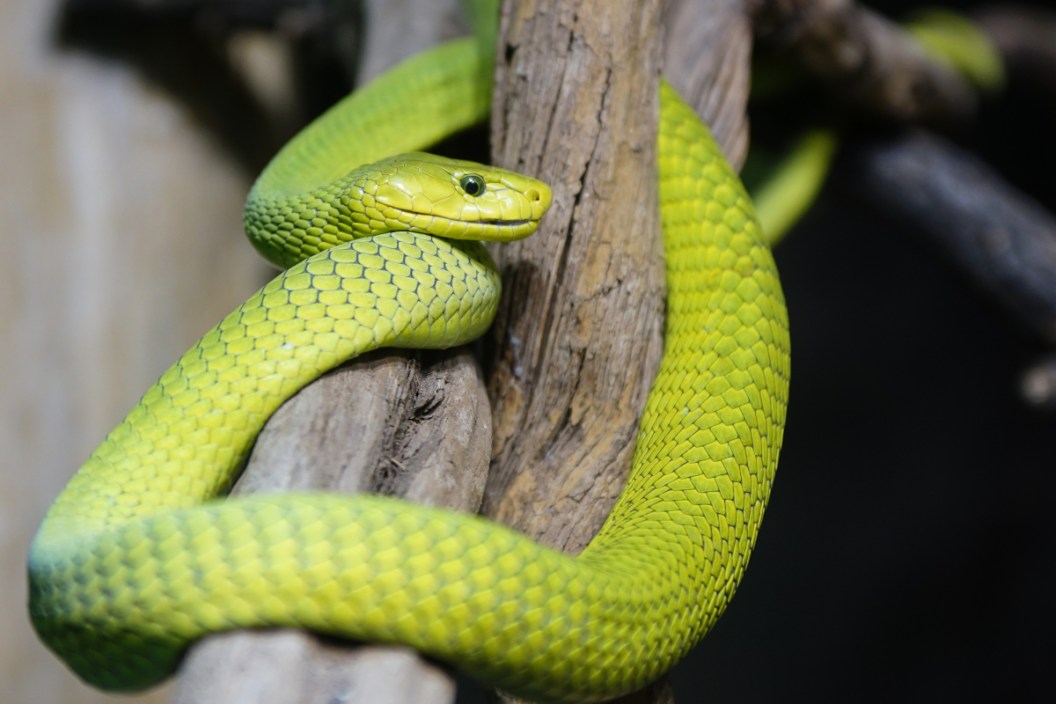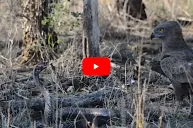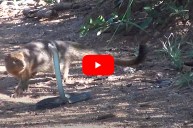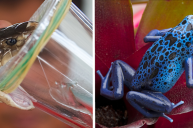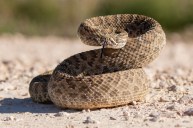The green mamba: a beautiful snake with a nasty bite.
Africa is loaded to the gills with dangerous animals that strike fear in the hearts of many humans whenever they are encountered in the wild. One of the biggest fears is the snake also known as the black mamba. It's a highly venomous snake species responsible for many deaths throughout the dark continent.
While the black variety seems to get all the attention, there are two additional mamba species to keep an eye out for during any outdoor adventure in the dark continent, especially if you're headed to any tropical rainforests. We are talking of course about the eastern green mamba and the western green mamba.
These two species are strikingly similar, although just as dangerous as the more infamous black mamba. Today we'll give you the straight facts on these infamous snakes.
Eastern Green Mamba (Dendroaspis angusticeps)
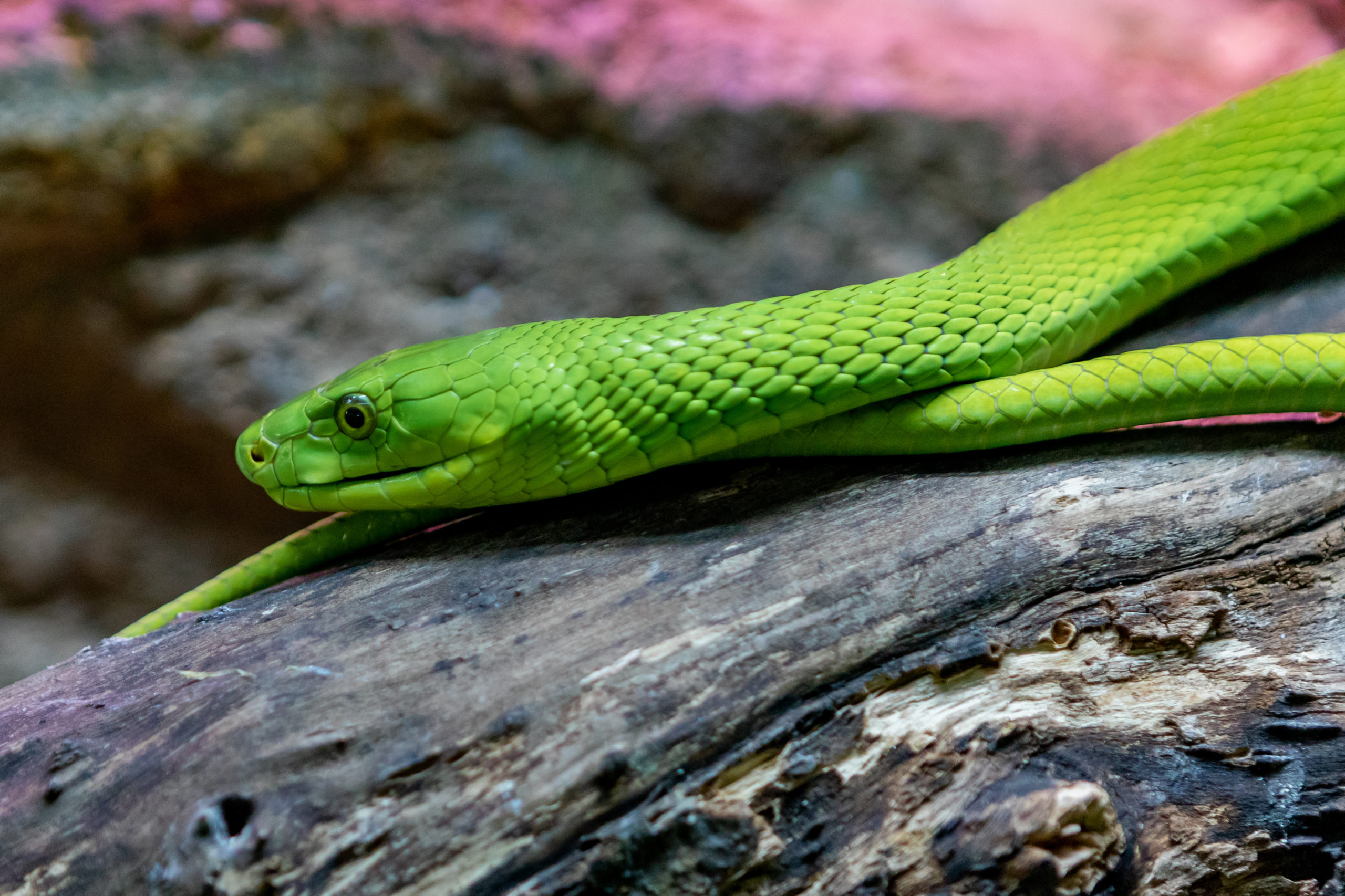
As you may have guessed from the name, this species is home mostly to the southern east Africa. The long and slender green mamba snake can grow to lengths stretching nearly eight feet and is most common in parts of South Africa, Kenya, Zimbabwe and Tanzania, Zanzibar, Mozambique, and Malawi. Like the black mamba, this species has round pupils. While they share many physical characteristics, knowing the difference between these dangerous snakes is easy thanks to the coloration. While the black mamba is a rather dull grey, the green mamba is often colored quite vibrantly as the name implies. Most specimens are bright green with a hint of a yellowish tint.
This coloration suits this species well for its preferred home, which is arboreal in nature, meaning up in the treetops. That's good news for humans since it means conflicts with people are rare. However, problems can arise if the snake just happens to take up residence in a yard or somewhere humans are cultivating fruit trees. This snake eats mostly birds and small mammals as prey, and those types of trees can just happen to draw in the snake's favorite foods.
Fortunately for us, herpetologists have observed the east African green mamba to be extremely lazy. While it is quite fast, it seems to reserve most of that speed for ambush attacks. Or to escape predators in a pinch. In fact, the green mamba is quite content to sit in one spot for days at a time waiting for a meal to pass by. Depending on the availability of prey and mates during the breeding season, this species may not move for days at a time. Because they don't like leaving their treetop homes that often, you are unlikely to encounter one on the ground.
We'll talk about the venom later but one thing to keep in mind is that this species is not the same as the boomslang, also known as Dispholidus typus, an equally venomous species that also likes to hide out in the treetops. Just remember there are more color variations in the boomslang.
Western green mamba (Dendroaspis viridis)
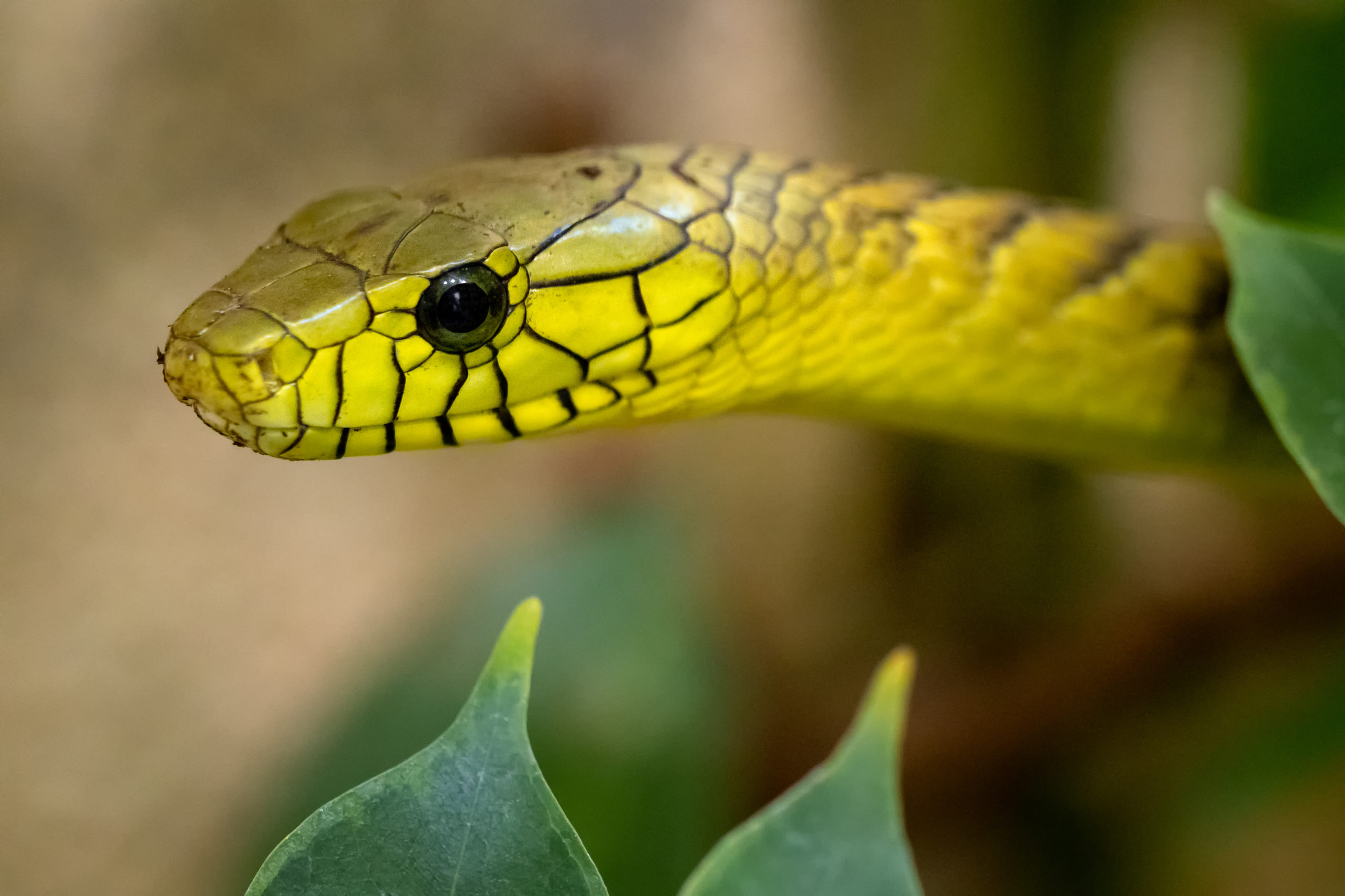
In truth, there is not a whole lot of differences between the west African green mamba and the eastern variety. It grows to near identical sizes and the dorsal scales often take on the same bright green coloration with a yellowish tint. At one time almost all the mambas, black or green, were lumped in as one species until scientists figured out they were distinct. The big difference here is distractive dark lines that usually highlight the space between the scales. There are also subtle differences in the venom but otherwise this is another large species that spends much of its time in the treetops. However, you're a bit more likely to find this snake slithering around on the ground than the eastern green mamba. Perhaps the easiest way to know what species you're looking at is to consider what part of Africa one sees it in. As the name implies, you're going to find this species hanging out on the west coast. It has been observed in Guinea, Togo, Senegal, Cote d'Ivoire, Ghana, Liberia, Sierra Leone, Benin and more.
Once again, because they are climbers, this is a species one is most likely to encounter in rain forest regions. Like the eastern variety, it is mostly an ambush predator that feeds mostly on birds, rodents, frogs, and lizards. However, just like the black mamba, both varieties of green mamba are extremely aggressive when cornered. This is a species that is not afraid to bite more than once. The good news is recorded bites from the western variety are rare. The bad news is that the western variety's venom has shown a bit more toxicity than the eastern in laboratory testing.
How venomous is the green mamba?
Unfortunately, both the eastern and western varieties of this snake have highly neurotoxic venom that attacks the nervous system and can cause severe tissue damage in humans. Neurotoxins are not great for anyone, but it is the cardiotoxins in this species' venom that are most frightening. As you may have guessed, that means the reptile's venom can attack your heart and circulatory system. Anyone with pre-existing health problems in either of those areas is likely going to be even more vulnerable to a bite.
Given the right circumstances and the right amount of venom, people have died in as little as 30 minutes from a green mamba bite. If the bite doesn't kill you, it can unleash a whole host of nasty symptoms beyond the pain and swelling you'll likely feel at the spot of the bite.
As the venom spreads through the victim's systems, it can cause problems breathing or swallowing, convulsions, mild paralysis, involuntary muscle movements, low blood pressure and an irregular heartbeat. Those are some of the worse symptoms. Many victims report lesser, but still unpleasant symptoms of headache, nausea, dizziness and even diarrhea. As if it wasn't bad enough you were bit by one of the most dangerous snakes on earth, it can also cause you to soil your pants!
Is the black mamba more deadly than the green mamba?
While the symptoms of a black mamba bite are near identical to the green mamba, scientists still consider the black mamba to be the deadlier of the two elapid species. It gets technical when talking about the toxicity of the venom, but all you need to know is black mamba bites are considered deadlier. The black mamba is usually considered one of the most venomous snakes on the planet by most scientists. The green mamba doesn't even chart in the top five or ten for most.
The secretive, shy nature of the green mamba is a huge factor in why bites from either the eastern or western varieties are so uncommon. People just don't go into the trees that often! In either case, our best advice for encountering any venomous snake remains the same. Give them a wide berth. Because the majority of snakebites seem to occur when humans try to capture or kill these animals needlessly.
For more outdoor content from Travis Smola, be sure to follow him on Twitter and check out his Geocaching and Outdoors with Travis YouTube channels.
NEXT: THE AXIS DEER AND HOW THEY'RE IMPACTING PARTS OF THE UNITED STATES
WATCH
